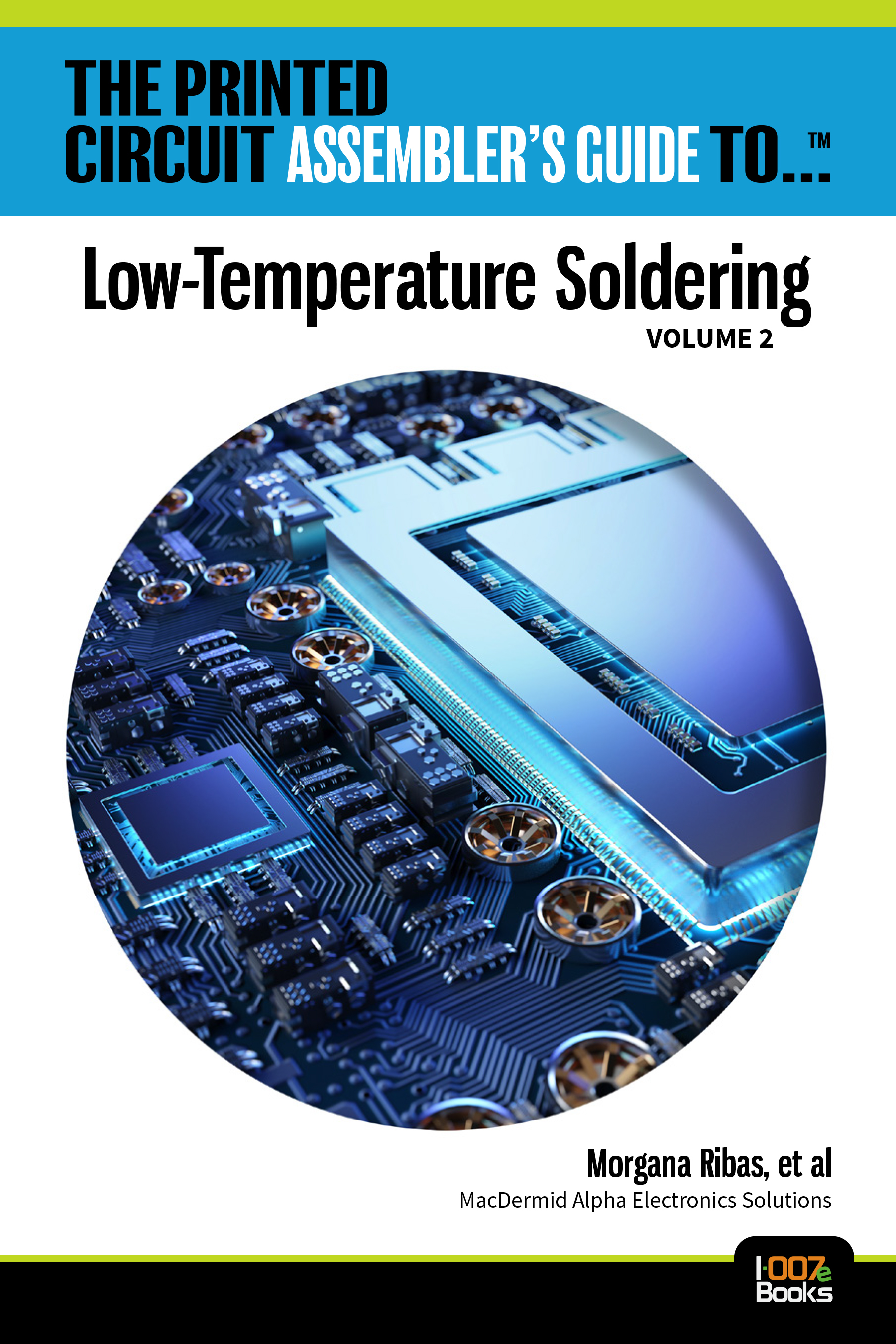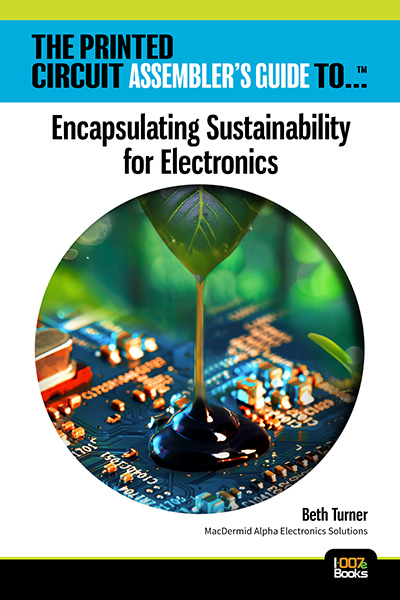-

- News
- Books
Featured Books
- pcb007 Magazine
Latest Issues
Current Issue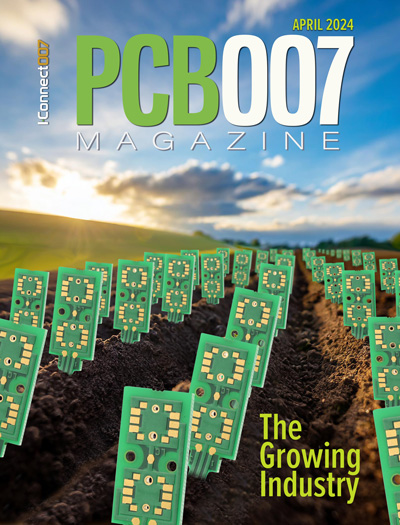
The Growing Industry
In this issue of PCB007 Magazine, we talk with leading economic experts, advocacy specialists in Washington, D.C., and PCB company leadership to get a well-rounded picture of what’s happening in the industry today. Don’t miss it.
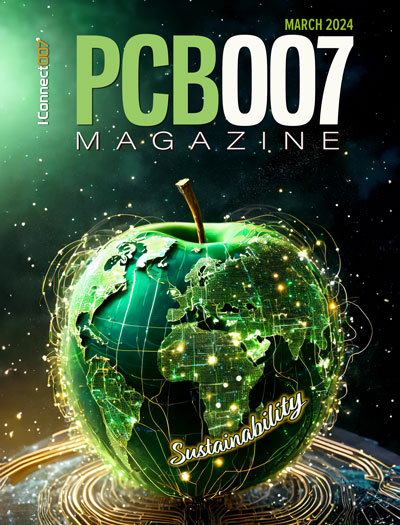
The Sustainability Issue
Sustainability is one of the most widely used terms in business today, especially for electronics and manufacturing but what does it mean to you? We explore the environmental, business, and economic impacts.
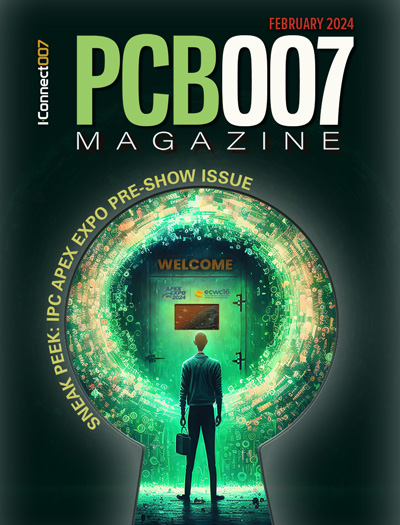
The Fabricator’s Guide to IPC APEX EXPO
This issue previews many of the important events taking place at this year's show and highlights some changes and opportunities. So, buckle up. We are counting down to IPC APEX EXPO 2024.
- Articles
- Columns
Search Console
- Links
- Events
||| MENU - pcb007 Magazine
The Chemical Connection
Column from: Don Ball
Don Ball is a senior chemical process engineer for Chemcut.
April 05, 2024
The Chemical Connection: Reducing Etch System Water Usage, Part 1
Water conservation has become an important component of the overall system design for most manufacturing operations today. Changing climate conditions and increasing populations are beginning to strain the freshwater supplies in many areas of the country. As a result, as equipment suppliers, we see an increasing number of requests for options that reduce water usage in proposed wet processing systems. Etching systems tend to use more water because of the need for close temperature control to maintain steady etch rates and the rinsing requirements for complete removal of corrosive etchants from the surface of the product before the next process step. This column contains some simple suggestions for reducing water usage in etch systems that won’t strain the budget too much.February 28, 2024
The Chemical Connection: An Exhibitor’s View of IPC APEX EXPO
When I learned that this issue would be dedicated to optimizing the bare board fabricator’s experience at the IPC APEX EXPO 2024, I thought it would be an easy column to write. With more than 40 of these shows under my belt, I didn’t think it would be too difficult to come up with a list of dos and don’ts to make your visit to an exhibitor’s booth worthwhile. So, what can you do to make your visit even more useful?February 16, 2024
The Chemical Connection: Getting to Know Your Vendor
After working for a capital equipment supplier for almost 50 years, I’ve found that the most important part of getting to know your vendor is good communication among all parties. While contact between fabricators of a constantly changing product line and the designers of those products may occur daily or weekly, conversations between you and your equipment supplier may be years apart. That lengthy gap often means that previous contacts may have been promoted, retired, or moved on to other opportunities. You may have also migrated to a new supplier with whom you have little or no history. In either case, you will be interacting with someone you are unfamiliar with (as they are with you). Therefore, it is essential for both sides to communicate clearly so expectations will align.December 28, 2023
The Chemical Connection: The High Cost of Etcher Non-maintenance
We all understand that day-to-day maintenance and long-term preventive maintenance of etching equipment is a good thing. However, the pressing need to get product out the door in the face of tough production schedules can sometimes cause us to delay necessary maintenance for long periods of time. In some cases, we become fixated on short-term production and forget about long-term stability.September 25, 2023
The Chemical Connection: Don’t Just Blame the Etcher
If your HDI or UHDI production process is quality challenged, don’t assume your etcher is to blame. Many factors impact the quality of the final product, so assess broadly, and you may find that the “the devil is in the details.” Generally, the first place most people can get good product specification measurement is at the end of the etching process, It’s natural and easy to blame quality shortcomings on the etcher. By all means, look at your etcher and invest some time trying to improve its performance but don’t stop there. Other factors may be affecting the etch uniformity.July 12, 2023
The Chemical Connection: Solutions for Better Etch Uniformity
In my very first column, “Etch Uniformity and The Puddle Problem,” I wrote about a phenomenon in the PCB etching process called the “puddle effect,” which causes large PCB panels to have varying etch quality across the board, typically on the top side. This variation exists because as you are spraying etchant onto the top of a panel, you begin to accumulate spent etchant. It creates a layer that inhibits the fresh etchant from reaching the board’s copper surface that needs to be etched.June 12, 2023
The Chemical Connection: The Challenges of Thin Material Transport
In wet processing, the transport of thin materials and substrates (less than 1 mil in thickness) can be a rather tricky process. These materials are vital in manufacturing flexible circuits, but often this flexibility adds new challenges. Most of these materials are easily damaged, and in some cases require well-trained personnel to handle them. You would think that this could be easily remedied with conveyorized equipment, but it is not entirely the case. Transporting thin materials through a conveyor aids the process to a degree, but once you get to the wet-processing stages—cleaning, developing, etching, and stripping—there are risks for error if you do not have the right tools or equipment.May 10, 2023
The Chemical Connection: Engaging the Next Generation
If you work for a company that employs people of a younger generation, you may have a lot of questions. Many people tell me that there is often a major disconnect between the young workforce, comprising Millennials and Gen Zers, and the established workforce made up of Baby Boomers and Gen Xers. If you are among the more seasoned crowd, it may be useful to gain some insights into the perspective of younger generations. The better you understand how they think and what they need, the more likely you can keep them happy in their jobs.April 13, 2023
The Chemical Connection: Chemical Control for Wet Processes
As I’ve mentioned in previous columns, etching can be the most complex process in the wet processing stages because there are many factors that contribute to your etch rate. Without keeping these contributing factors steady, your etch rate will vary and, therefore, so will your product quality. If you are looking to implement an automated approach to maintaining your etch chemistry, here are the basic concepts you will need to understand.March 13, 2023
The Chemical Connection: Wet Process Start-up Considerations
Are you considering starting your own PCB fabrication process? Do you have a solid game plan? If you are new to managing a PCB shop, the first thing to know is that wet processing is essential in making PCBs. Wet processing steps, such as cleaning, developing, etching, and stripping, are among the many steps in the PCB fabrication process that require thorough planning. When you are just starting to get involved in this industry, keeping track of all this can feel overwhelming. Here are a few considerations and base essentials to aid you in starting up the wet processes for your new facility.February 13, 2023
The Chemical Connection: The Subtractive Vision
The November issue of PCB007 included a fair amount of discussion on the growing need for ultra-high density interconnects (UHDI). UHDI is an area replete with manufacturing challenges due not only to the feature sizes this technology requires (< 50 micron or < 2 mils), but also the lack of familiarity U.S. manufacturers have with this technology. In an interview with Calumet’s Todd Brassard and Meredith LaBeau, they stated that the U.S. is roughly 30 years behind the curve in manufacturing UHDI, which is likely the result of companies offshoring UHDI manufacturing for many years. How can we catch back up?January 11, 2023
The Chemical Connection: Basics of Cupric Chloride Etchant
Cupric chloride (CuCl2) is an etchant that has capabilities that make it a great application in PCB manufacturing. Maintaining CuCl2 is relatively forgiving in comparison to alkaline etchant because there are only a handful of parameters you need to monitor. If CuCl2 seems like it would be an appealing etchant to use for your PCB etch process, here are some basic parameters that are key to understanding how to maintain it.December 06, 2022
The Chemical Connection: Cupric Chloride Regeneration Options
Cupric chloride (CuCl2), if you recall my column “Etchants of the Industry: Cupric vs. Alkaline,” is the second most used etchant in PCB etching next to alkaline etchant. It holds many benefits such as simple maintenance, easy wastewater treatment, reduced cost of etching, and efficient regeneration. Many times, I have discussed how critical it is to implement regeneration because it allows you to maintain a consistent etch quality and reduces the cost of etching. What makes cupric’s etch regeneration simple is that it is a matter of what you choose to use.November 11, 2022
The Chemical Connection: Closing the Innovation Gap
In Nolan Johnson’s September 2022 column, “New Era Manufacturing,” he referred to the carriage whip manufacturing businesses that met their fate by failing to adapt while other carriage businesses with more robust product applications remained standing. He said this relates to our industry in the sense that the needs of our world are evolving, that the wants and needs of PCB fabricators and their customers are bound to change. There will always be a demand for PCBs, since it is the foundation of modern technology, but market challenges are inevitable. PCB fabricators are dealing with increasing material and labor costs, all while major quick-turn-around jobs are declining. The questions we must ask are: Where do we go from here? How can PCB fabricators overcome these challenges and get an edge in the market? How can we best adapt?October 12, 2022
The Chemical Connection: How to Automate Your Wet Processes
Considering automating your PCB fabrication line? If you are, then you may have concerns about what it takes to implement new automation technology. The good news is that setting up your processing lines for automation is simpler than you may think. Whether you are obtaining new equipment, or you want to automate a machine that you’ve been working with for years, automating it can be as simple as tightening a few bolts and wiring a couple connections. Automating your process lines are now easier than ever thanks to low-cost, user configurable robot arms. Since most of the processes from beginning to the end of PCB manufacturing are already automated (at least in wet processing), the only areas left open for automation are the loading and unloading sections.September 08, 2022
The Chemical Connection: The Etch Factor
One of the biggest obstacles that PCB manufacturers face is etch factor. Etch factor is the ratio of downward etch to sideways etch. Etch factor poses challenges to PCB fabricators because it limits PCB design. It can determine how fine of a line you can etch, and it can even affect how close together you can have features. For instance, if you wanted to use cupric chloride (etch factor of 3:1) to etch a fine line (3 mils or less), you might not be capable of doing that with panels of thicker copper layers. If you try to do that, you will likely receive inconsistent results throughout your panels. Inconsistencies will arise because there is a point where the sideways etch will affect metal underneath the photoresist and etch it away.August 17, 2022
The Chemical Connection: Don't Sludge-Out—A Guide for Alkaline Etching
In my last column, I compared cupric chloride and alkaline cupric chloride, mentioning that alkaline etchant is the most used etchant for PCB fabrication. It is used because it provides a high etch rate, improved etch factor, and compatibility with metallic resists. Although it has some great benefits, it has the drawback of being difficult to control. The etching chemistry requires a delicate balance, and the parameters it needs to stay within are relatively tight. Not only are the margins for error small, but falling outside these parameters may have consequences.July 16, 2022
The Chemical Connection: Etchants of the Industry—Cupric vs. Alkaline
Chemical etching is a vital process for manufacturing PCBs. It is one of the most complex chemical processes next to plating. This is because there are many different variables that can affect your product and how efficiently it is produced. Although it is complex, etching of copper can be narrowed down to a handful of etchants that PCB manufacturers widely use. By far, the most common etchants are cupric chloride and alkaline cupric chloride, commonly referred to as “ammoniacal alkaline etchant.” There are other etchants for copper, such as ferric chloride, sodium persulfate, and alkaline ammonia sulfate, but they are not commonly used for PCB manufacturing and are often only used in “special cases.” I may touch on those other etchants a bit more in a future column, but this one will focus on cupric and alkaline.June 06, 2022
The Chemical Connection: How Industry 4.0 Shapes PCB Wet Processes
Earlier this year, I had the opportunity to attend IPC EXPO 2022 where I was able to network with many great people in the electronics industry and see how other businesses are connected to the work we do at Chemcut. Although that might have been my main takeaway, there was another trend that I couldn’t ignore: the fourth generation of the industrial revolution is alive and well in the industry. After being shown the many different technologies that can be leveraged to boost automation, I couldn’t help but consider how they may impact the wet processing side of PCB manufacturing. I also wonder about other forms of automation we may soon see and what those developments could mean for the industry.May 04, 2022
The Chemical Connection: The Case for Preventive Maintenance
Preventive maintenance (PM) is a routine maintenance performed to ensure equipment runs efficiently and won’t experience problems anytime soon. This routine maintenance can become highly important when you are running a business that relies heavily on equipment for production. Printed circuit board (PCB) shops are no exception to this because their production is dependent on many different complex machines working together. Although PM is critical, a large portion of PCB shops don’t have a PM program. Far too often, manufacturers will wait until a machine starts experiencing problems before they act.March 14, 2022
The Chemical Connection: Etch Uniformity and the Puddle Problem
Printed circuit board manufacturers who utilize wet processes have always strived to receive a uniform etch across their panels. Although it is one of the most common matters these manufacturers tackle, it is perhaps the least understood. This is for a few reasons, one of them being that there doesn’t seem to be an agreed upon terminology within PCB manufacturing.
Copyright © 2024 I-Connect007 | IPC Publishing Group Inc. All rights reserved.
Log in
